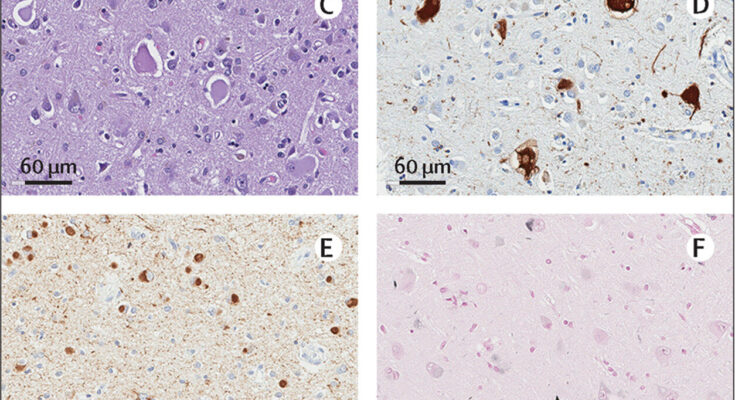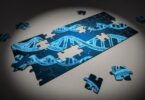Brain pathology analyzes from individuals with Pick’s syndrome. Credit: Lancet Neurology (2024). DOI: 10.1016/S1474-4422(24)00083-8
Pick’s disease, a neurodegenerative disorder of unknown genetic origin, is a rare form of frontotemporal dementia that affects people under the age of 65. The condition causes changes in personality, behavior and sometimes speech impairment.
In patients with the disease, tau proteins accumulate and form abnormal clumps called Pick bodies, which block nutrients in the brain and cause neurodegeneration. The only way to diagnose this disease is to look at brain tissue under a microscope after a person dies.
Researchers at the Mayo Clinic in Florida, University College London in England and colleagues around the world have formed the Pick’s Disease International Consortium to study a specific variant of the MAPT gene known as MAPT H2 that makes the tau protein and act as a disease driver. They investigated the relationship between genetics and risk of death, age of onset, and duration of Pick’s disease. Their findings are reported in Lancet Neurology.
Mayo Clinic researchers discovered the first MAPT gene mutation for a behavioral form of dementia in 1998, and other gene mutations associated with dementia-related dementia in 2001, which opened the way to understanding the mechanisms of lion-related disease. This new study confirms the tau genetic factor specifically associated with Pick’s disease and opens new avenues for treatment planning.
“Our research could have profound implications for the development of treatments for Pick’s disease and other related neurodegenerative diseases, including Alzheimer’s disease and progressive supranuclear palsy,” says Owen Ross, Ph. D., Mayo Clinic neuroscientist and senior author of the paper. The Consortium has a collection of clinical, pathological and demographic data on patients with this disease who have donated their brain cells for science.
To conduct the study, researchers compared brain samples from 338 patients diagnosed with Pick’s disease to blood samples from 1,312 mentally healthy individuals. Patients confirmed to have the disease from 35 brain banks and hospitals in North America, Europe and Australia between 2020 and 2023. The Mayo Clinic Brain Bank was one of the study sites that provided with the largest collection of samples.
When the research team analyzed DNA from blood and brain samples, they recorded the study participants’ basic information, including age of onset, age of death for those with Pick’s syndrome, sex and age at diagnosis. blood collection for the control group.
Time to death was calculated as the difference between the age at onset of Pick’s disease and the age at death. In addition, the researchers looked at clinical characteristics such as clinical examination, behavioral and language impairments.
“We found that a variant of the MAPT H2 gene is associated with an increased risk of Pick’s disease in people of European descent,” says Dr. Ross. “We were only able to know that because of the international conference, which increased the size of the samples of disease cases to study Pick’s disease.”
The team’s next steps are to expand the consortium to the Middle East, Asia, Africa and Latin America, to further unravel the genetic makeup of the disease, and to explore this genetic variation as a biomarker or diagnosis. of the clinical diagnosis of Pick’s disease. There is currently no medical test or diagnosis available for Pick’s disease. For the first time, the establishment of a consortium may allow for a clinical trial.
Additional information:
Rebecca R Valentino et al, MAPT H2 haplotype and risk of Pick’s disease in the Pick’s disease International Consortium: a genetic study, Lancet Neurology (2024). DOI: 10.1016/S1474-4422(24)00083-8
Newspaper articles:
Lancet Neurology
Neurology
#genetic #study #opens #treatment #options #Picks #disease #rare #form #earlyonset #dementia






